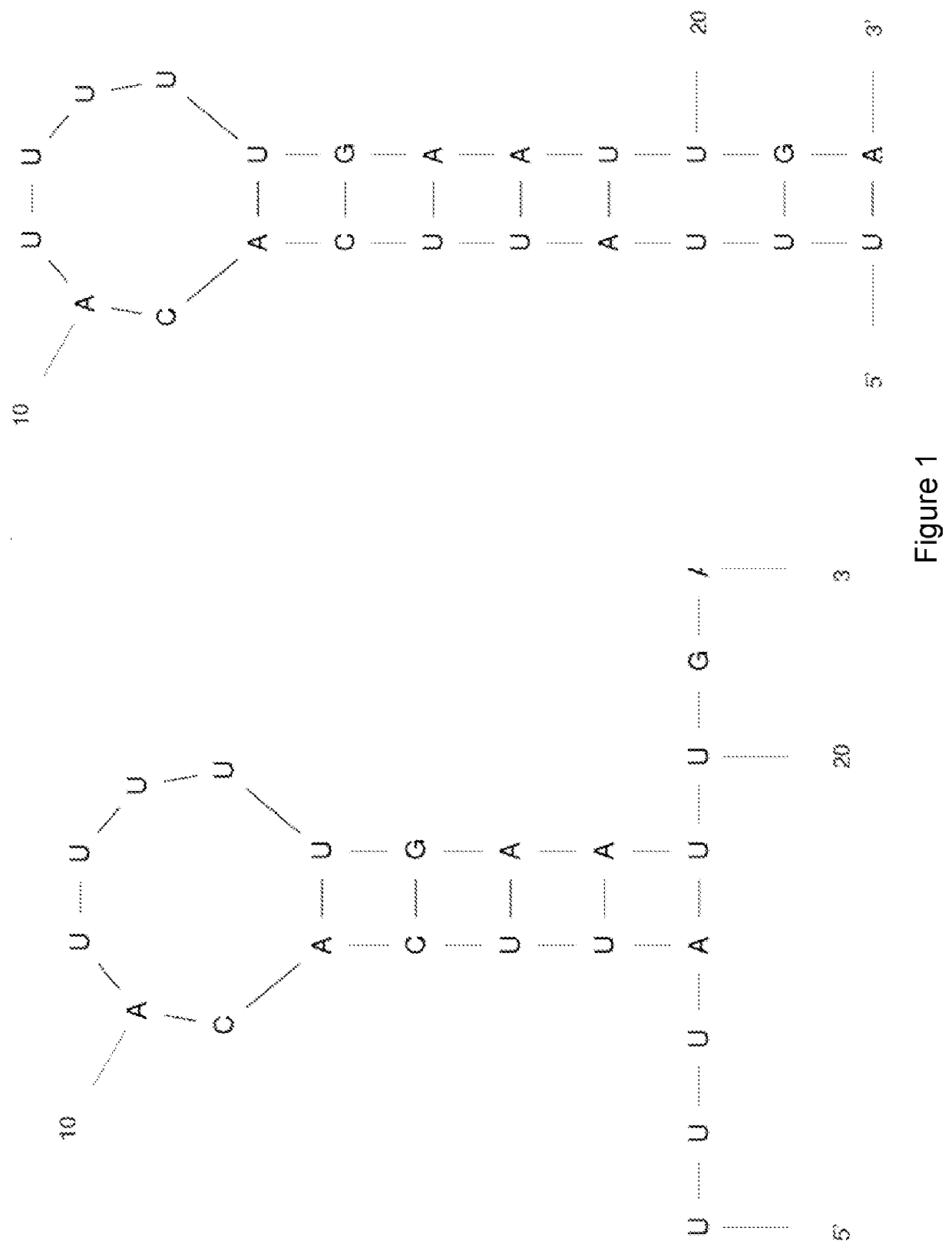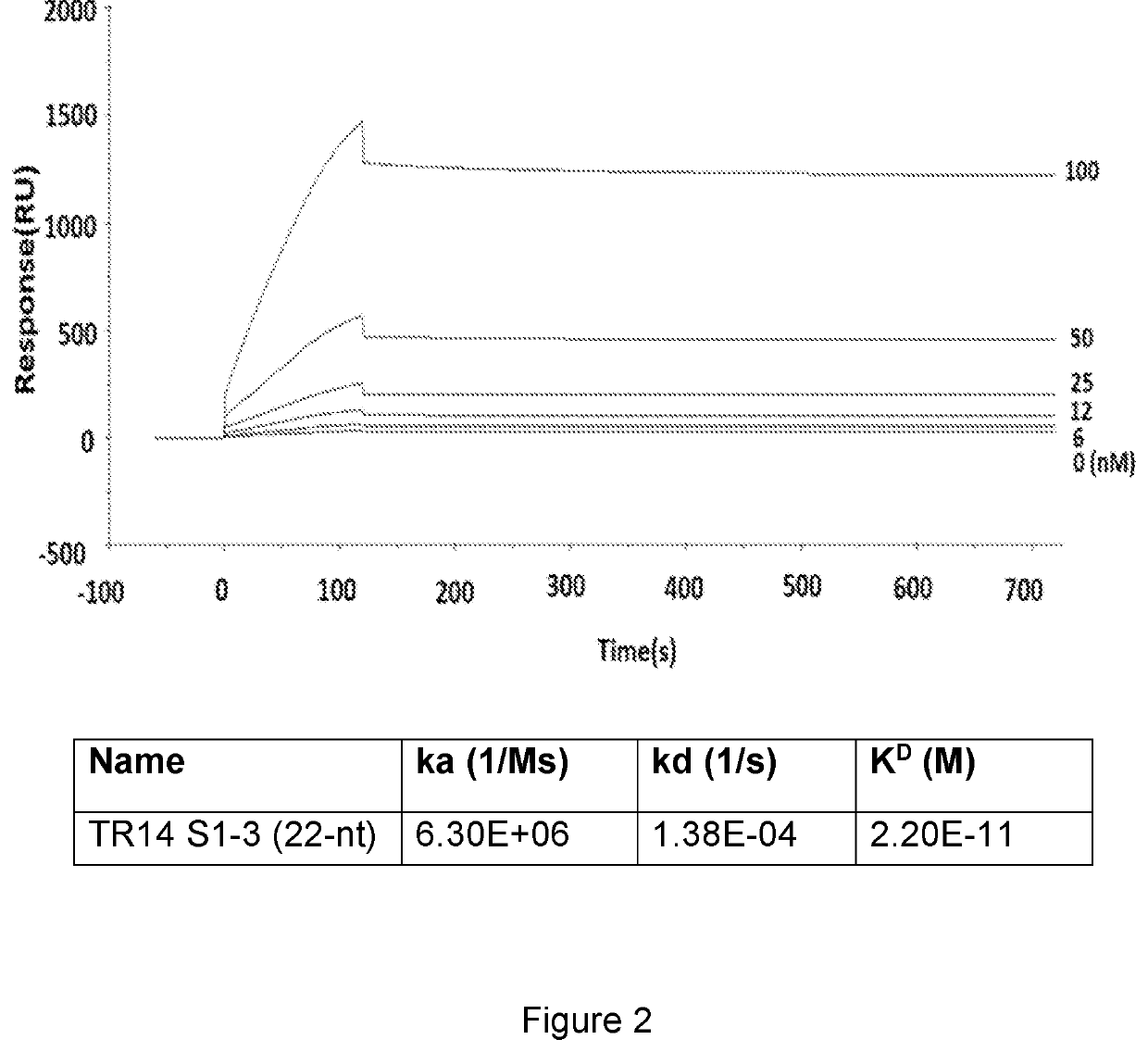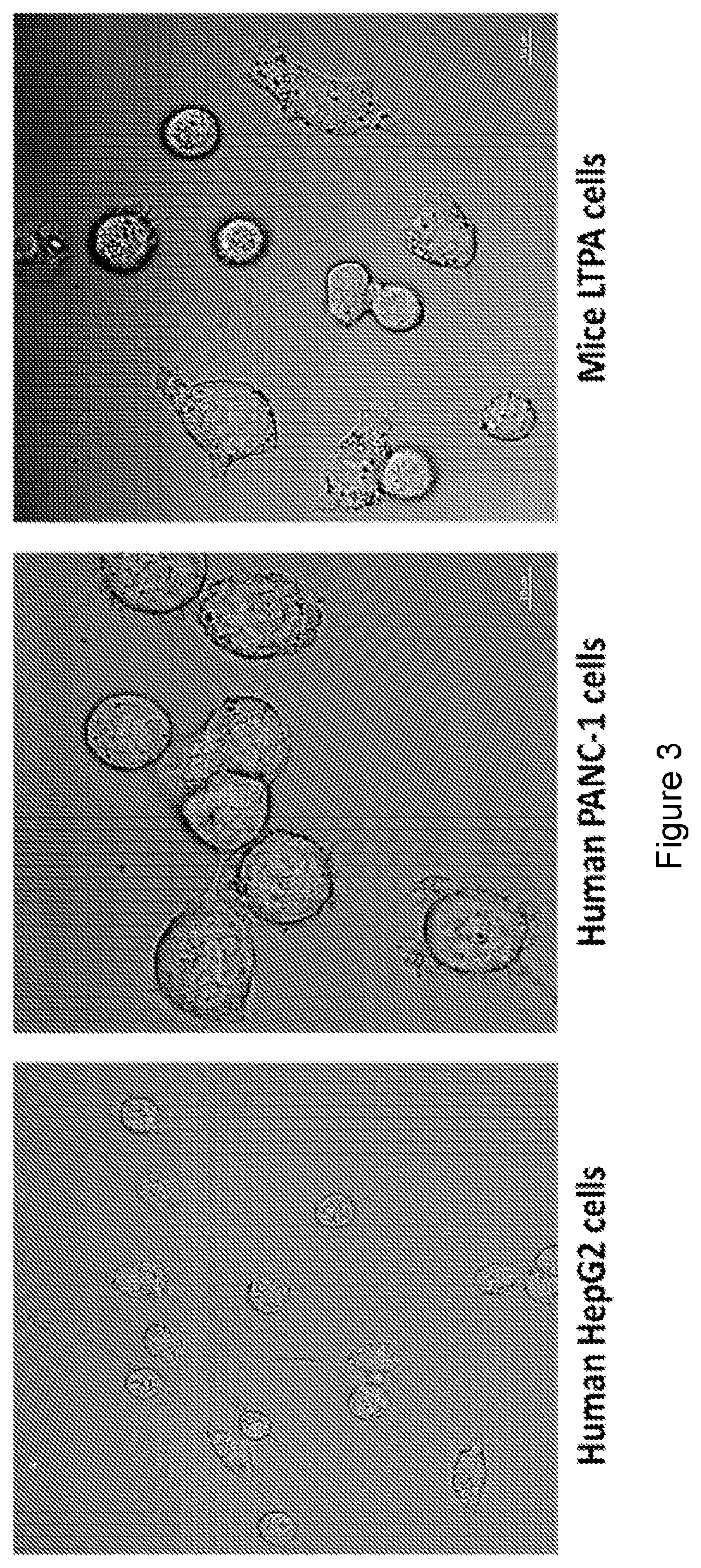RNA aptamers against transferrin receptor (TFR)
a technology of rna aptamers and transferrin receptors, applied in the field of ribonucleic acid compounds, can solve problems such as the hinderance of brain disorders in treatmen
- Summary
- Abstract
- Description
- Claims
- Application Information
AI Technical Summary
Benefits of technology
Problems solved by technology
Method used
Image
Examples
embodiments
[0261]Embodiments include but are not limited to embodiments P1 to P32 following:
[0262]Embodiment P1. A ribonucleic acid compound comprising, or consisting of, an RNA sequence having at least 90% sequence identity to SEQ ID NO:1, wherein said RNA sequence has a length of 29 nucleotides or fewer, and wherein the RNA sequence is capable of binding to a transferrin receptor (TfR).
[0263]Embodiment P2. The ribonucleic acid compound according to embodiment P1, wherein said RNA sequence has a length of 22 nucleotides or fewer.
[0264]Embodiment P3. The ribonucleic acid compound according to embodiment P1 or embodiment P2, wherein said RNA sequence is 22 nucleotides in length.
[0265]Embodiment P4. The ribonucleic acid compound according to any one of embodiments P1 to P3, wherein the RNA sequence has 100% sequence identity to SEQ ID NO:1.
[0266]Embodiment P5. A ribonucleic acid compound comprising, or consisting of, an RNA sequence having at least 90% sequence identity to SEQ ID NO:5, wherein s...
example 1
[0303]Selection and Characterisation of TfR Aptamers
[0304]Aptamers capable of binding to the extracellular domain of TfR were identified by protein SELEX (systemic evolution of ligands by exponential enrichment), basically as described by Tuerk and Gold (Tuerk, C., Methods Mol Biol., 67, 219-230 (1997), and as described in the Examples of WO 2006 / 061386.
[0305]A library of 2′F RNAs was used to increase nuclease-resistance and enhance aptamer folding. To isolate 2′F RNA aptamers binding to intact cells, a library of approximately 440 different 2′F RNA molecules, containing a 40-nt-long random sequence flanked by defined sequences, was screened by SELEX. After 12 cycles of selection, the highly enriched aptamer pools were cloned.
[0306]An 87-nucleotide TfR RNA aptamer (TR14; SEQ ID NO:2) and a 43-nucleotide TfR RNA aptamer (TR14 S2; SEQ ID NO:3) were identified and characterised, as described in WO 2006 / 061386. The binding affinity of both TR14 and TR14 S2 aptamers for TfR was measured ...
example 2
[0307]A 22-Nucleotide TfR Aptamer
[0308]A smaller truncated version of the TR14 aptamer was synthesised (SEQ ID NO:1). This 22-nucleotide TfR aptamer was designated “TR14 S1-3”. The structure of TR14 S1-3 was predicted using Mfold software (Zuker M, Nucleic Acids Res. 2003 Jul. 1; 31(13):3406-15), and available at http: / / unafold.rna.albany.edu / ?q=mfold. The Mfold predicted structures for TR14 S1-3 are shown in FIG. 1.
[0309]The kinetics of TR14 S1-3 were analysed by surface plasmon resonance (SPR) technology. The Biacore T100 (GE Healthcare, Uppsala, Sweden) was used to monitor label-free the aptamer-transferrin receptor interactions in real time. Biotinylated aptamers were coupled to a streptavidin-coated Biocore chip (SensorChip SA, BR-1003-98, General Electric Company) by an injection in binding buffer at concentration of 25 μg / mL (30 mM Tris-HCl, pH 7.5, 150 mM NaCl, 5 mM MgCl2) at 10 uL / min. The RNA was refolded by heating to 65° C. followed by cooling to 37° C. before immobiliza...
PUM
 Login to View More
Login to View More Abstract
Description
Claims
Application Information
 Login to View More
Login to View More - R&D
- Intellectual Property
- Life Sciences
- Materials
- Tech Scout
- Unparalleled Data Quality
- Higher Quality Content
- 60% Fewer Hallucinations
Browse by: Latest US Patents, China's latest patents, Technical Efficacy Thesaurus, Application Domain, Technology Topic, Popular Technical Reports.
© 2025 PatSnap. All rights reserved.Legal|Privacy policy|Modern Slavery Act Transparency Statement|Sitemap|About US| Contact US: help@patsnap.com



